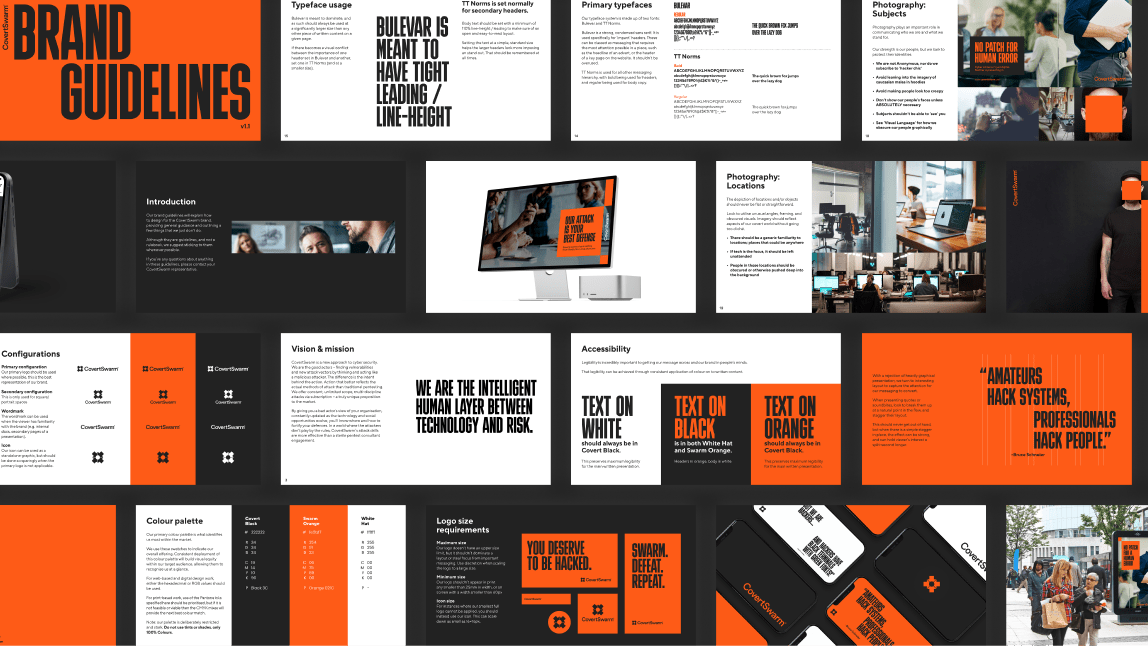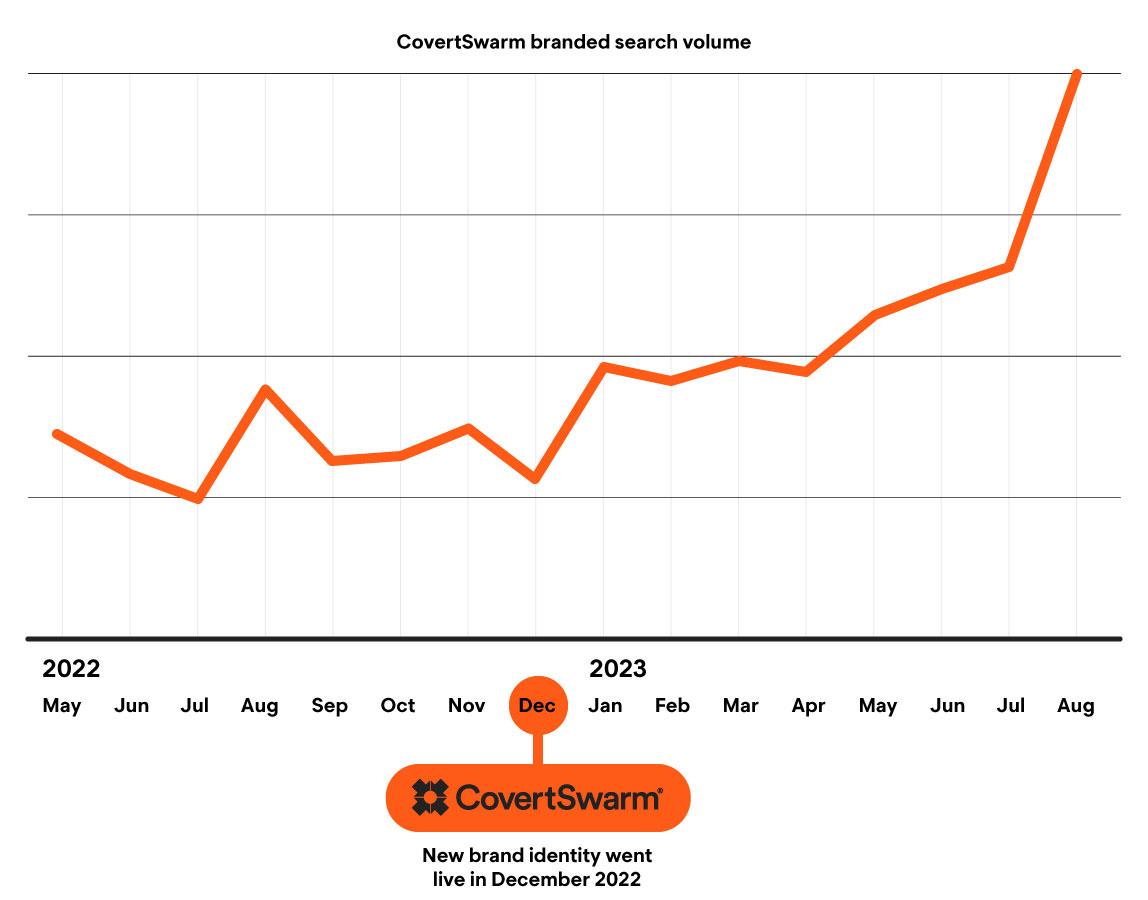Brand Refresh vs. Rebrand: How to decide what’s right for you.
Why brands evolve
No brand is built to stand still
As businesses grow, shift focus or expand their offer, the identity they started with can begin to feel like it’s from another era. And often, it is. The visual system, messaging, or strategy that once felt confident and cohesive starts showing signs of age. Inconsistent usage creeps in. Messaging becomes diluted. The story the brand tells becomes harder to follow, for the audience and internal teams alike.
It’s not a unique problem to solve. The business has evolved but the brand hasn’t kept up.
It’s at this point that a brand can begin to work against you. Instead of signalling clarity, it creates confusion. Trust begins to erode and what was once authentic and unquestionable becomes misleading and confusing.
A well-aligned identity doesn’t just clarify what a business does. It communicates ambition. It builds belief internally and it helps the right people externally understand not just what you offer, but why it matters.
So if something feels off, how do you know whether you need a brand refresh or a complete rebrand?
What’s the difference?
Put simply, a brand refresh is an evolution, not a revolution.
It’s a way to update and inject fresh energy into your identity without abandoning everything that came before. Core assets such as the name or logo stay the same, but the colour palette, typography, messaging, photography style or visual language get a lift. There should be a thread that can be followed from where you are to where you’re going. It’s about tightening things up and improving upon what exists, ensuring the brand aligns with where the business is now.
Best for:
- Businesses that have grown or shifted slightly in focus.
- Brands that feel tired or inconsistent but still have strong recognition and a loyal audience.
- Organisations looking to modernise without losing their core identity.
A rebrand is a strategic reset of the entire identity.
This is the bigger move. It can include a new name, a completely revised brand strategy and a new identity system. It’s typically triggered by a major change such as a merger or a substantial shift in audience or offering. Simply put, a rebrand repositions the business and reintroduces it to the world on new terms.
Best for:
- Brands that have an identity that no longer reflects what the business does.
- Companies undergoing significant strategic change.
- Businesses facing perception issues or reputational damage.
So, how do you decide?
There is no cheat sheet, but there are some questions and considerations to keep in mind that can help steer you in the right direction.
1. What problem/s are we trying to solve?
It sounds obvious, but it’s a question too many teams skip. Start with what’s changed. Is your audience different? Have you outgrown your original niche? Are you no longer proud of how your brand looks or sounds?
The clearer you can be about the problem, the more strategic the solution will be. Avoiding surface-level changes that are born of subjectivity and focus on the real source/s of friction will ensure you develop an identity that is meaningful and successful.
2. What kind of brand equity do we actually have?
There’s often a gap between internal perception and external reality. People inside a business tend to overestimate just how much the brand means to the market, especially if it’s been around for a while. But longevity isn’t the same as relevance.
Real brand equity is about how your audience perceives you. Is your brand recognised? Respected? Understood? Or, is it just familiar?
If your brand is well known and positively regarded, it’s’ worth protecting that equity and evolving carefully. If you’re struggling to gain traction or the perception is misaligned with reality, a rebrand may be justified.
Gut instinct is not enough here. An honest brand audit, combined with audience research can help you see clearly.
3. Where are we on our journey?
Your brand’s level of maturity matters.
Younger brands are often able to experiment more with positioning and market fit. There’s more room to test, learn and adapt. A rebrand at this stage can be a powerful way to sharpen your brand’s focus or double down on a new opportunity within or across sectors. More established brands have more at stake. Changing perception is harder, and there’s more risk of alienating your existing audience. But when done well, a rebrand can reinvigorate a business and open new doors. Clarity and intention are of utmost importance here. This isn’t just about where you’ve been or where you are now, but also where you are going.
Brand differentiation
These are high stakes decisions. Many brands default to looking and sounding like their competitors, partly out of habit and partly because of the risk involved in getting it wrong. However, this also leads to opportunity.
A bold, strategically-led identity can completely reframe how your business is perceived. It’s not about bold for bold’s sake, and it’s not about shouting louder than everybody else, it’s about showing confidence, clarity and personality. When you’re surrounded by voices all saying the same thing in the same way, standing out becomes surprisingly simple. Being different requires bravery, but it is a route towards an ownable space in the market that can resonate with your audience.

Our work for CovertSwarm looked to break free of the predictability that dominates the cybersecurity sector. We approached the rebrand from a place of intention and authenticity, leading to an identity that subverted expectations.

“This brand and strategy project has provided huge value, delivering a distinctiveness which is already reflected in pipeline activity. We’re delighted with our new brand, with positive internal buy-in from both clients and employees alike; it’s given us an unassailable point of difference, and we’re so proud of our distinctive new identity that reflects the bold way we deliver our work.”
– Anders Reeves, Founder of CovertSwarm

This kind of bold, strategically led approach to brand identity helped CovertSwarm stand out in a crowded marketplace. Combined with a unified post-launch strategy that included SEO and PPC activity alongside updated creative and a new website, CovertSwarm saw their branded search volume double compared to the beginning of our partnership.
Signs it’s time for change
If you’re still unsure whether a refresh or a rebrand is even necessary, these signals can help:
- Your visual identity feels dated or inconsistent across platforms
- Your messaging doesn’t reflect your offer or positioning
- You’ve added new products or services that aren’t captured by the current brand
- Your internal teams struggle to use or understand the brand
- Customers or prospects misunderstand what you do
- Competitors are presenting themselves better or gaining more attention
If one or more of these are hitting close to home, it’s worth having the conversation.
Whether you choose to refresh or fully rebrand, the goal is the same: to bring your brand into alignment with where your business is now and where it’s going next.
When done well, brand identity isn’t just a layer of polish, it becomes a tool for growth. It creates clarity and builds belief. When so many brands play it safe, it can be the difference between being remembered and being ignored.
If your brand no longer reflects your ambition, don’t ignore it. Revisit it. Challenge it. Invest in it. And if you need help working out where to start, we’d love to talk.
The post Brand Refresh vs. Rebrand: How to decide what’s right for you. appeared first on Hallam.


